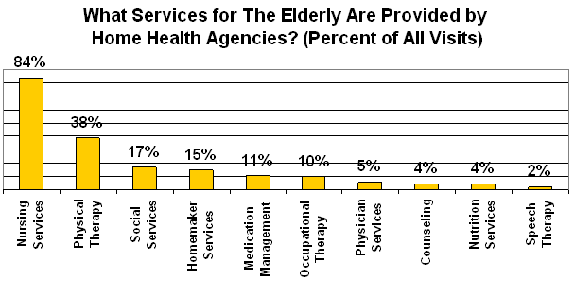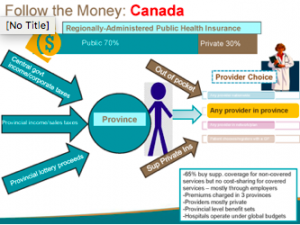An estimated 155 million individuals under the age 65 were covered under health insurance coverage prepares supplied by their companies in 2016. The Congressional Spending Plan Office (CBO) approximated that the medical insurance premium for single protection would be $6,400 and family protection would be $15,500 in 2016. The yearly rate of boost in premiums has typically slowed after 2000, as part of the trend of lower annual healthcare boost.
This aid motivates people to purchase more substantial protection (which places upward pressure usually premiums), while also motivating more young, healthy individuals to enlist (which places downward pressure on premium costs). CBO approximates the net result is to increase premiums 10-15% over an un-subsidized level. The Kaiser Household Foundation approximated that household insurance coverage premiums averaged $18,142 in 2016, up 3% from 2015, with employees paying $5,277 towards that expense and employers covering the rest.
The President's Council of Economic Advisors (CEA) described how annual boost have fallen in the employer market since 2000. Premiums for household protection grew 5.6% from 2000-2010, however 3.1% from 2010-2016. The overall premium plus estimated out-of-pocket expenses (i.e., deductibles and co-payments) increased 5.1% from 2000-2010 however 2.4% from 2010-2016.
The law is developed to pay subsidies in the type of premium tax credits to the individuals or families purchasing the insurance, based on earnings levels. Greater income consumers get lower subsidies. While pre-subsidy prices rose significantly from 2016 to 2017, so did the subsidies, to decrease the after-subsidy cost to the customer. what countries have universal health care.
Nevertheless, some or all of these expenses are offset by subsidies, paid as tax credits. For instance, the Kaiser Structure reported that for the second-lowest cost "Silver strategy" (a plan typically picked and utilized as the standard for identifying monetary assistance), a 40-year old non-smoker making $30,000 each year would pay effectively the very same quantity in 2017 as they carried out in 2016 (about $208/month) after the subsidy/tax credit, despite large boosts in the pre-subsidy price.

Some Ideas on What Is A Deductible In Health Care You Need To Know
To put it simply, the subsidies increased in addition to the pre-subsidy cost, fully offsetting the cost increases. This superior tax credit subsidy is separate from the expense sharing decreases aid discontinued in 2017 by President Donald Trump, an action which raised premiums in the ACA marketplaces by an estimated 20 percentage points above what otherwise would have occurred, for the 2018 strategy year.
In addition, many workers are selecting to combine a health savings account with greater deductible strategies, making the effect of the ACA challenging to figure out precisely. For those who acquire their insurance coverage through their employer (" group market"), a 2016 study discovered that: Deductibles grew by 63% from 2011 to 2016, while premiums increased 19% and employee incomes grew by 11%.
For firms with less than 200 workers, the deductible averaged $2,069. The portion of workers with a deductible of a minimum of $1,000 grew from 10% in 2006 to 51% in 2016. The 2016 figure drops to 38% after taking company contributions into account. For the "non-group" market, of which two-thirds are covered by the ACA exchanges, a survey of 2015 data discovered that: 49% had private deductibles of at least $1,500 ($ 3,000 for household), up from 36% in 2014.
While about 75% of enrollees were "extremely pleased" or "rather pleased" with their choice of physicians and medical facilities, only 50% had such complete satisfaction with their yearly deductible. While 52% of those covered by the ACA exchanges felt "well secured" by their insurance coverage, in the group market 63% felt that method.
prescription drug spending in 2015 was $1,162 per individual on average, versus $807 for Canada, $766 for Germany, $668 for France, and $497 for the UK. The reasons for greater U.S. healthcare expenses relative to other nations and with time are discussed by experts. Bar chart comparing healthcare costs as portion of GDP throughout OECD nations Chart showing life span at birth and health care spending per capita for OECD nations since 2013.
A Health Care Professional Is Caring For A Patient Who Is About To Begin - An Overview
is an outlier, with much greater spending however second-rate life span. U.S. health care costs in 2015 were 16.9% GDP according to the OECD, over 5% GDP higher than the next most pricey OECD country. With U.S. GDP of $19 trillion, health care expenses were about $3.2 trillion, or about $10,000 per person in a nation of 320 million people.
To put it simply, the U.S. would have to cut health care costs by roughly one-third ($ 1 trillion or $3,000 per individual usually) to be competitive with the next most costly nation. Healthcare costs in the U.S. was distributed as follows in 2014: Hospital care 32%; doctor and medical services 20%; prescription drugs 10%; and all other, including numerous classifications individually comprising less than 5% of costs.
Essential distinctions consist of: Administrative costs. About 25% of U.S. health care expenses associate with administrative costs (e.g., billing and payment, as opposed to direct arrangement of services, supplies and medicine) versus 10-15% in other countries. For instance, Duke University Medical facility had 900 health center beds however 1,300 billing clerks. Assuming $3.2 trillion is invested on healthcare each year, a 10% savings would be $320 billion per year and a 15% cost savings would be almost $500 billion per year.
A 2009 research study from Cost Waterhouse Coopers estimated $210 billion in savings from unnecessary billing and administrative costs, a figure that would be considerably higher in 2015 dollars. Expense variation throughout medical facility areas. Harvard economist David Cutler reported in 2013 that roughly 33% of health care costs, or about $1 trillion annually, is not associated with enhanced results.
In 2012, average Medicare compensations per enrollee varied from a changed (for health status, income, and ethnicity) $6,724 in the most affordable spending area to $13,596 in the highest. The U.S. invests more than other nations for the very same things. Drugs are more costly, medical professionals are paid more, and suppliers charge more for medical devices than other countries.
Our What Should A Health Care Worker Do Immediately After A Safety Violation Occurs? PDFs

costs on doctors per individual has to do with 5 times greater than peer nations, $1,600 versus $310, as much as 37% of the gap with other countries. This was driven by https://driana5evj.wixsite.com/deanzfgw340/post/the-best-guide-to-how-does-electronic-health-records-improve-patient-care a greater usage of expert doctors, who charge 3-6 times more in the U.S. than in peer countries. Greater level of per-capita earnings, which is correlated with greater healthcare costs in the U.S.
Hixon reported a study by Princeton Professor Uwe Reinhardt that concluded about $1,200 per person (in 2008 dollars) or about a 3rd of the space with peer nations in healthcare spending was because of higher levels of per-capita earnings. Higher income per-capita is associated with utilizing more systems of healthcare.
The U.S. takes in 3 times as many mammograms, 2.5 x the variety of MRI scans, and 31% more C-sections per-capita than peer nations. This is a blend of higher per-capita earnings and greater use of professionals, to name a few aspects. The U.S. government intervenes less actively to force down rates in the United States than in other nations.